The Liberia Portal The flag of Liberia  Location of Liberia Liberia (/laɪˈbɪəriə/ ⓘ), officially the Republic of Liberia, is a country on the West African coast. It is bordered by Sierra Leone to its northwest, Guinea to its north, Ivory Coast to its east, and the Atlantic Ocean to its south and southwest. It has a population of around 5 million and covers an area of 43,000 square miles (111,369 km2). The country's official language is English; however, over 20 indigenous languages are spoken, reflecting the country's ethnic and cultural diversity. The capital and largest city is Monrovia. Liberia began in the early 19th century as a project of the American Colonization Society (ACS), which believed black people would face better chances for freedom and prosperity in Africa than in the United States. Between 1822 and the outbreak of the American Civil War in 1861, more than 15,000 freed and free-born African Americans, along with 3,198 Afro-Caribbeans, relocated to Liberia. Gradually developing an Americo-Liberian identity, the settlers carried their culture and tradition with them. Liberia declared independence on July 26, 1847, which the U.S. did not recognize until February 5, 1862. Liberia was the first African republic to proclaim its independence and is Africa's first and oldest modern republic. Along with Ethiopia, it was one of the two African countries to maintain its sovereignty and independence during the European colonial "Scramble for Africa". During World War II, Liberia supported the United States war effort against Germany, and in turn received considerable American investment in infrastructure, which aided the country's wealth and development. President William Tubman encouraged economic and political changes that heightened the country's prosperity and international profile; Liberia was a founding member of the League of Nations, United Nations, and the Organisation of African Unity. The Americo-Liberian settlers did not relate well to the indigenous peoples they encountered. Colonial settlements were raided by the Kru and Grebo from their inland chiefdoms. Americo-Liberians formed into a small elite that held disproportionate political power; indigenous Africans were excluded from birthright citizenship in their own land until 1904. In 1980, political tensions from the rule of William R. Tolbert resulted in a military coup during which Tolbert was killed, marking the end of Americo-Liberian rule in the country and beginning over two decades of political instability. Five years of military rule by the People's Redemption Council and five years of civilian rule by the National Democratic Party of Liberia were followed by the First and Second Liberian Civil Wars. These resulted in the deaths of 250,000 people (about 8% of the population) and the displacement of many more, with Liberia's economy shrinking by 90%. A peace agreement in 2003 led to democratic elections in 2005. (Full article...) Selected article -The First Liberian Civil War was the first in a series of two civil wars within the West African nation of Liberia. It lasted from 1989 to 1997. President Samuel Doe established a regime in 1980 but totalitarianism and corruption led to unpopularity and the withdrawal of support from the United States by the late 1980s. The National Patriotic Front of Liberia (NPFL) led by Charles Taylor invaded Liberia from the Ivory Coast to overthrow Doe in December 1989 and gained control over most of the country within a year. Doe was captured and executed by the Independent National Patriotic Front of Liberia (INPFL), a splinter faction of the NPFL led by Prince Johnson, in September 1990. The NPFL and INPFL fought each other for control of the capital city, Monrovia and against the Armed Forces of Liberia and pro-Doe United Liberation Movement of Liberia for Democracy. Peace negotiations and foreign involvement led to a ceasefire in 1995 but fighting continued until a peace agreement between the main factions occurred in August 1996. Taylor was elected President of Liberia following the 1997 Liberian general election and entered office in August of the same year. The First Liberian Civil War killed around 200,000 people and eventually led to the involvement of the Economic Community of West African States (ECOWAS) and the United Nations. The peace lasted for two years until the Second Liberian Civil War broke out when anti-Taylor forces invaded Liberia from Guinea in April 1999. (Full article...)Did you know -
More Did you know (auto generated)
Selected image - Credit: 26th MEU(SOC) PAO, United States Marines
The Martin, a World Food Programme ship unloads pallets of high energy biscuits at the Freeport of Monrovia on August 15, 2003 during the Second Liberian Civil War. General images -The following are images from various Liberia-related articles on Wikipedia.
CategoriesCategory puzzle Select [►] to view subcategories
Liberia Liberia-related lists Buildings and structures in Liberia Culture of Liberia Economy of Liberia Education in Liberia Environment of Liberia Geography of Liberia Government of Liberia Health in Liberia History of Liberia Organizations based in Liberia Liberian people Politics of Liberia Society of Liberia Liberia stubs TopicsCities and townsRelated portalsWikiProjects
Associated WikimediaThe following Wikimedia Foundation sister projects provide more on this subject:
SourcesDiscover Wikipedia using portals
|

_Departure_of_colored_emigrants_for_Liberia_-_The_Illustrated_American%252C_March_21%252C_1896.jpg.webp)

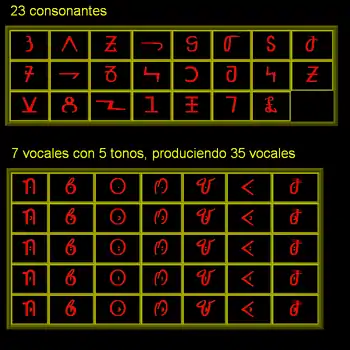


.jpg.webp)
_Liberia._Money_Trees.jpg.webp)



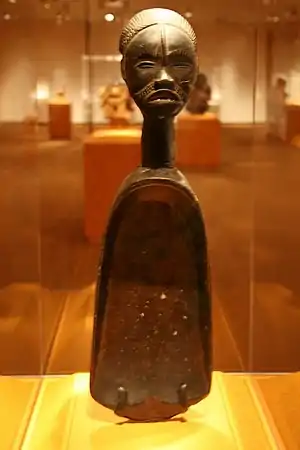

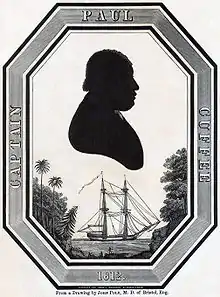



.svg.png.webp)









.jpg.webp)

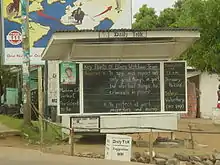
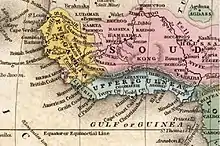
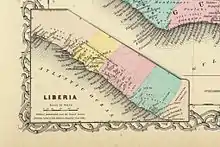



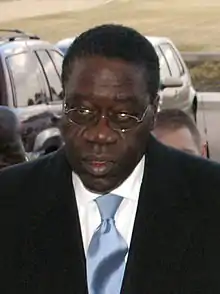

_Residence_of_Joseph_Roberts%252C_President_of_the_Republic_of_Liberia.jpg.webp)

.svg.png.webp)
